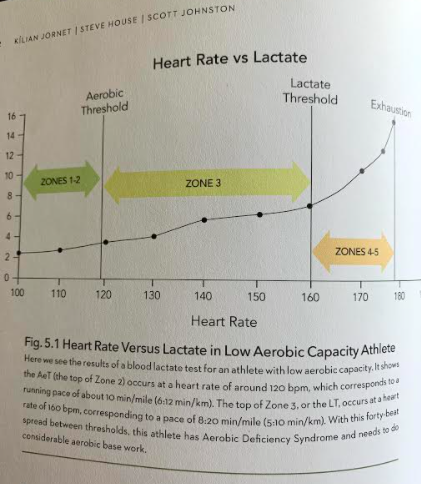What is Zone 2 Training?

What is Zone 2 Training?
If you’ve been following me for the past year, you know I’ve been heavily into Zone 2 training.
But WHAT is Zone 2 training?
You’ve heard of strength training, running, yoga, hell even high-intensity interval training but never Zone 2 training.
Let’s make some sense of it, and how it’ll be one of the best things you can do for your overall health. But first, a note: if you don’t have proper mobility to be running — don’t do it. Give yourself a hip assessment first and if you pass, continue reading. If you fail, you probably want to take our runners mobility class first

First off, let me say that I’m not an exercise physiologist or anything along those lines. Just a guy who gets a little nerdy about how the body works. Everything I say in this blog, although heavily researched with resources provided, is my own words.
Let’s start here:
What is Zone 2 Training?
The primary goal of Zone 2 training is to build an aerobic base and endurance.
Let’s back this up for a second. Before we dive too deep into it (promise I won’t get too sciency, yet) there are a few things you need to understand.
The first is the difference between the two cardiovascular conditioning types - Anaerobic and Aerobic.
The easiest way to describe the difference is that anaerobic is quick, hard bursts of conditioning (think sprints), and aerobic are longer-lasting, slower types of conditioning.
Zone 2 training is the latter.
Increased aerobic capacity, or zone 2, enhances your ability to sustain a pace below your aerobic threshold for long periods of time. Whenever you work above this threshold, the body is extremely inefficient and instead of producing energy will produce lactate and will force the body to stop the exercise bout sooner.
This makes Zone 2 training the foundation from which to begin your threshold or higher intensity work. Your high-intensity work will never get better unless you increase your ability to do sustained efforts at your Zone 2 level.
A great example I like using when describing this is to think of your zone 2 as a your gas tank. The more zone 2 training you do, the bigger your gas tank becomes. Then, when you go to do a higher effort activity, you have more fuel to pull from because of the bigger gas tank. BUT, if you only do higher level activity, zone 3/4/5, that gas tank stays small and you’ll prematurely peak, get injured or burnout.
How to find your Aerobic Threshold or Zone 2 Level
Keeping it super general, zone 2 heart rate is an effort you can keep while being able to maintain a conversation, while also focusing on biomechanics. Usually, this lies somewhere from 65%-85% of someone’s threshold power and threshold heart rate.
A super-easy way to calculate this number is with the Maximum Aerobic Function, MAF, method. This test was developed by Dr. Phil Maffetone in the early 80s and is highly accepted in the ultrarunning world. He breaks finding your AeT (aerobic threshold) into a simple formula:
Zone 2 Threshold = Age - 180
This formula will work if you’ve been training consistently for two years without setbacks. But if you’re recovering form an injury or long layoff that occurs more than two times per year, subtract 5 more. Also, if you’ve been specifically training your Zone 2 for more than the last 2 years then add 5
Getting Sciency
Zone 2 work is necessary for endurance athletes because in zone 2 you burn fat as fuel versus sugar. As your heart rate increases, the ratio of glycogen consumption increases, which becomes a limiter in endurance races because our muscles only store a limited supply. Without any sort of supplementation, even the highest trained athletes can store only 1-2 hours worth of glycogen in your muscles. So, if you’re a sugar burner as opposed to a fat burner, good luck lasting more than 2 hours.
You ever go on a run and feel your blood sugar plummet and you're desperately craving a burger? That's sugar burning.
In order to work, we need energy.
We create energy in two different ways:
Anaerobic glycolysis metabolic pathway and Aerobic Metabolism. Both of these occur in the mitochondria of the cell and produce 2 ATP (energy) and 26 ATP respectively.
They also produce pyruvate and the fate of pyruvate is essential to how the body responds to activity. After glycolysis, pyruvate can take two roads - enter the cells mitochondria and keep going through aerobic metabolism thus yielding 36 more ATP, or hang outside the mitochondrial membrane where it’s converted to lactic acid. So, one creates more energy and the other cramps you up.
Which is better?
When you’re working below your AeT, pyruvate production is small enough that most of it can be taken back to the mitochondria and utilize it in ATP production rather than lactate accumulation.
How Heart rate Plays a Role
If you’re out of shape, your heart rate is going to skyrocket when you workout thus making your energy production inefficient. This leads to faster burnout, more lactate production and getting to exhaustion much quicker


Here are two screen grabs from The Uphill Athlete book that I share with a ton of my online clients on what Heart rate vs blood lactate concentration looks like. As you can see, the trained athlete can work up until 160 bpm before the body even thinks about getting into their lactate threshold. This allows for sustained efforts at this pace without risk of fatigue. But, the low aerobic capacity athlete’s AeT occurs at a much lower BPM and they tap into their lactate levels much quicker.
This graph shows the actual change in someone’s blood lactate levels with sufficient Zone 2 training. Their AeT went from 120 bpm and 10 min mile to 150pm and 8:15 min mile. They can sustain this zone 2 for hours on end, but now at a much higher pace.
Why we need more Zone 2 work
Do you feel gassed after a workout? Can’t get through a deadlift set, kettlebell complex or a functional strength training program without being out of breath? Then you need to increase your AeT.
If you’re training for a marathon, endurance race, like to go on long hikes, or want your heart to perform more efficiently then you desperately need zone 2 work.
Being able to control Heart Rate Variance is one of the true indicators of how healthy someone is. If you’re able to maintain a sustained effort while managing HR levels then you have a strong, highly functional heart. Your body doesn’t care how nice your biceps look if your heart works like shit.
How to Implement Zone 2 training
This is getting too wordy, so let’s get some actionable items.
Zone 2 efforts should be anywhere from 40 minutes and up to get the true benefits.
Base your volume on yourself and your training history. Don’t go out and do 10 hours of zone 2 work if you haven’t run in years. Slow, progressive overload is what works. Becoming an online client with me also helps
I’ve been doing it for a year now, and am really reaping the benefits.
Fair warning, Zone 2 training is the most frustrating thing I have ever done. When you first start, chances are you’ll be going at a turtles pace or even a walk. Don’t quit on it. The biggest mistake people make is pushing themselves while thinking this low-level work isn’t doing any good for them. With anything, this process takes time and patience.
Don’t get me wrong - I’m not hating on high-intensity work or never do it myself. Sprints are still one of the best things you can do for your body. Slamming hills is one of the best anaerobic cardio workouts you can do.
But, these bouts stress the body to such a high level you can’t sustain them multiple times a week for very long. It's all about your training history, and how you program it. Have a question on what your training week should look like? Shoot it over to me!
Want more info on Zone 2 Training?
The Uphill athlete book is one of the best resources I’ve found. It goes in-depth and teaches yo about the physiology behind building an aerobic base, zone work, and how to build a program based around HR levels.
I now base all of my workouts, weights included, around HR monitoring. Lots of Zone 2, lots of Red Zone 5. Now, I’m programming all my online clients to do the same. Work with me, and we can come up with a heart rate-based program for lifting, running biking, and everything in between.
Also, one of the best supplements to all your zone 2 work is going to be taking care of your joints. Love your heart with Zone 2 work, then do some mobility work.
I could go on and on about this stuff. Until vol 2 of zone 2…
And, if you want me to I will! Book a phone call with me below, and we can nerd out about all this stuff!
Have more questions? As always, feel free to reach out via email
contact@ripplebasecamp.com


